
Times Square is a square in Midtown Manhattan, New York City.
It is formed by the intersection of Seventh Avenue, 42nd Street, and Broadway.
Times Square is sometimes referred to as “the Crossroads of the World”, “the Center of the Universe”, “the heart of the Great White Way”, and “the heart of the world”.
It is one of the world’s most visited tourist attractions, drawing an estimated 50 million visitors annually. Approximately 330,000 people pass through Times Square daily, many of them tourists, while over 460,000 pedestrians walk through Times Square on its busiest days.
One of the world’s busiest pedestrian areas, it is also the hub of the Broadway Theater District and a major center of the world’s entertainment industry.
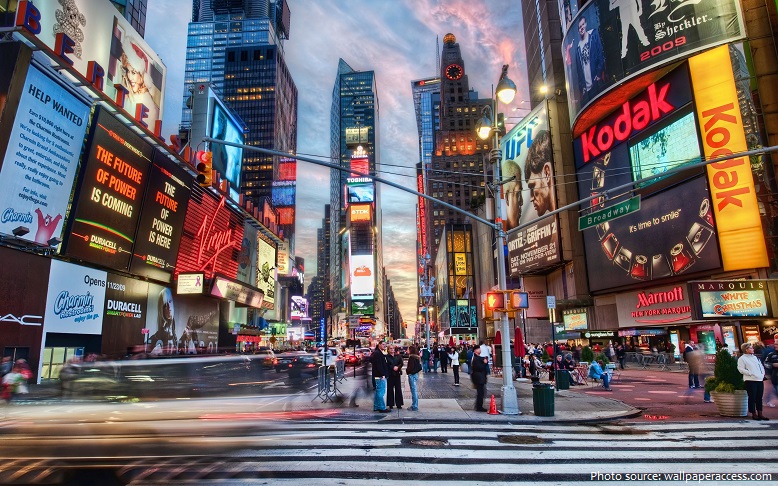
Times Square is not geometrically a square – it is closer in shape to a bowtie, with two triangles. The southern triangle of Times Square has no specific name, but the northern triangle is officially Duffy Square. It was dedicated in 1937 to World War I chaplain Father Francis P. Duffy of New York City’s US 69th Infantry Regiment and is the site of a memorial to him.
Known early on as Longacre Square, it had an unsavory reputation as the centre of illicit activity in the 1890s, though earlier in the 19th century it had been both a commercial and a residential area.
The square was renamed in 1904 for The New York Times, which opened its new offices in the Times Tower on the square (though it would outgrow them by 1913). Almost immediately the square became the place where New Yorkers gathered to celebrate the arrival of the new year.
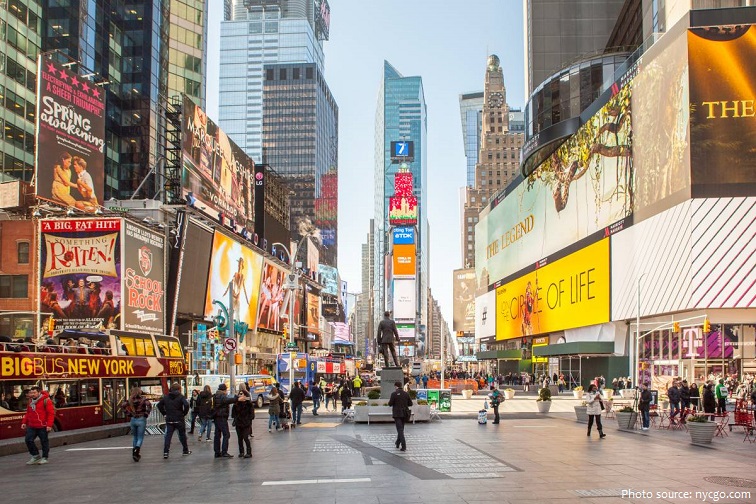
In 1907 the Times began lowering a huge glass ball down its flagpole at midnight on New Year’s Eve to mark the occasion. Throughout the years, ever more sophisticated technology was used for the square’s ball drop as the tradition came to include live television broadcasts that shared the experience with tens of millions of people across the United States.
Early on, Times Square became the preeminent American venue for advances in big, bright electric signage and advertising, especially after the introduction of neon signs in the 1920s. Beginning in 1928, the Times “zipper” used some 14,800 lightbulbs to render moving headlines. Among the square’s most famous signs were those depicting a huge coffee cup, out of which real steam rose, and a cigarette-smoking man, blowing steam-generated smoke rings.
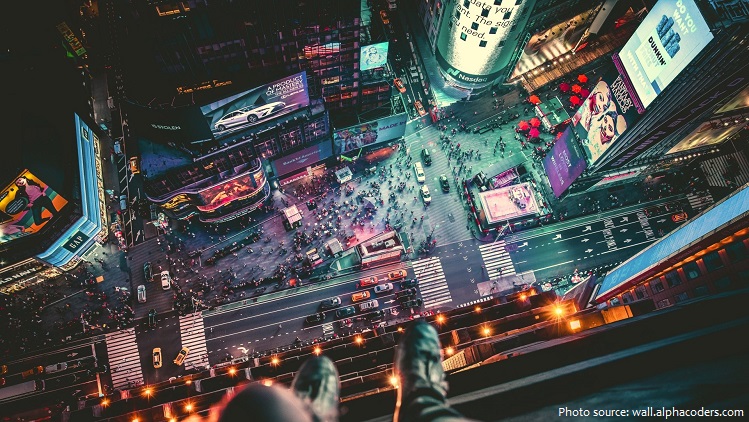
The general atmosphere of Times Square changed with the onset of the Great Depression in the early 1930s. City residents moved uptown to cheaper neighborhoods, and many popular theaters closed, replaced by saloons, brothels, “burlesque halls, vaudeville stages, and dime houses”. The area acquired a reputation as a dangerous and seedy neighborhood in the following decades.
From the 1960s to the early 1990s, the seediness of the area, especially due to its go-go bars, sex shops, peep shows, and adult theaters, became an infamous symbol of the city’s decline. As early as 1960, 42nd Street between Seventh and Eighth Avenue was described by The New York Times as “the ‘worst’ in town”.
Time Square’s resurgence in the 1990s, with the introduction of large tourist-friendly stores, theatres, and restaurants, is often credited to advocacy by Mayor Rudy Giuliani and to investment in the area by
the Disney Company.
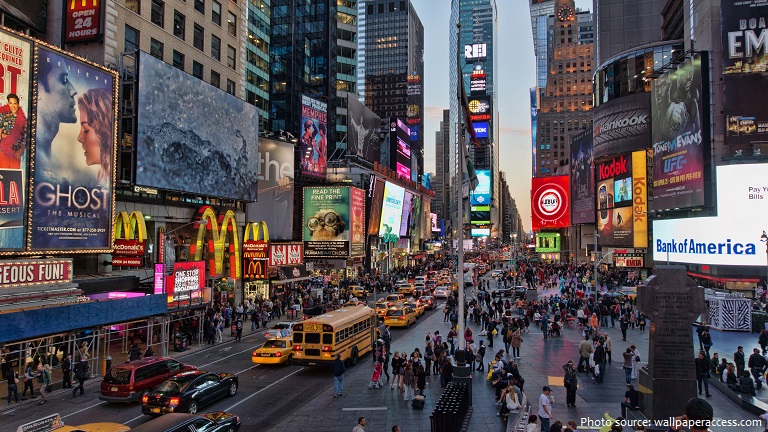
Times Square now boasts attractions such as ABC’s Times Square Studios, where Good Morning America is broadcast live – competing Hershey’s and M&M’s stores across the street from each other, and multiple multiplex movie theaters. Additionally, the area contains restaurants such as Ruby Foo’s, a Chinese eatery – the Bubba Gump Shrimp Company, a seafood establishment – Planet Hollywood Restaurant and Bar, a theme restaurant – and Carmine’s, serving Italian cuisine. It has also attracted several large financial, publishing, and media firms to set up headquarters in the area. A larger presence of police has improved the safety of the area.
The theatres of Broadway and the huge number of animated neon and LED signs have been one of New York’s iconic images as well as a symbol of the intensely urban aspects of Manhattan.
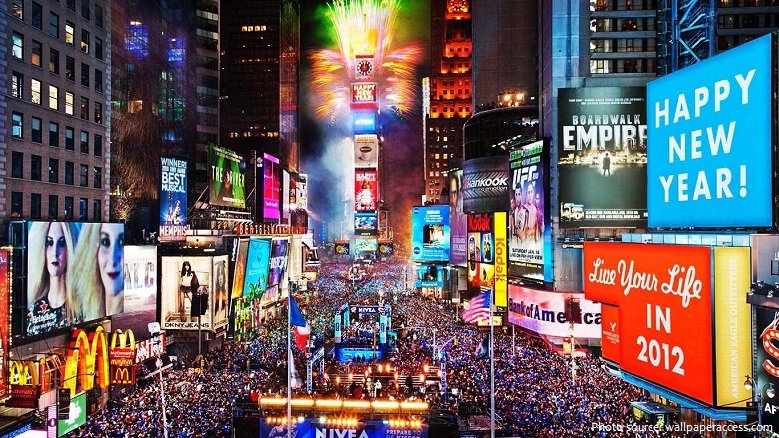
About one million revelers crowd Times Square for the New Year’s Eve celebrations, more than twice the usual number of visitors the area usually receives daily. However, for the millennium celebration on December 31, 1999, published reports stated approximately two million people overflowed Times Square, flowing from Sixth Avenue to Eighth Avenue and back on Broadway and Seventh Avenue to 59th Street, making it the largest gathering in Times Square since August 1945 during celebrations marking the end of World War II.
An immediately recognizable location, Times Square has been featured countless times in literature, films, video games, music videos, and on television.